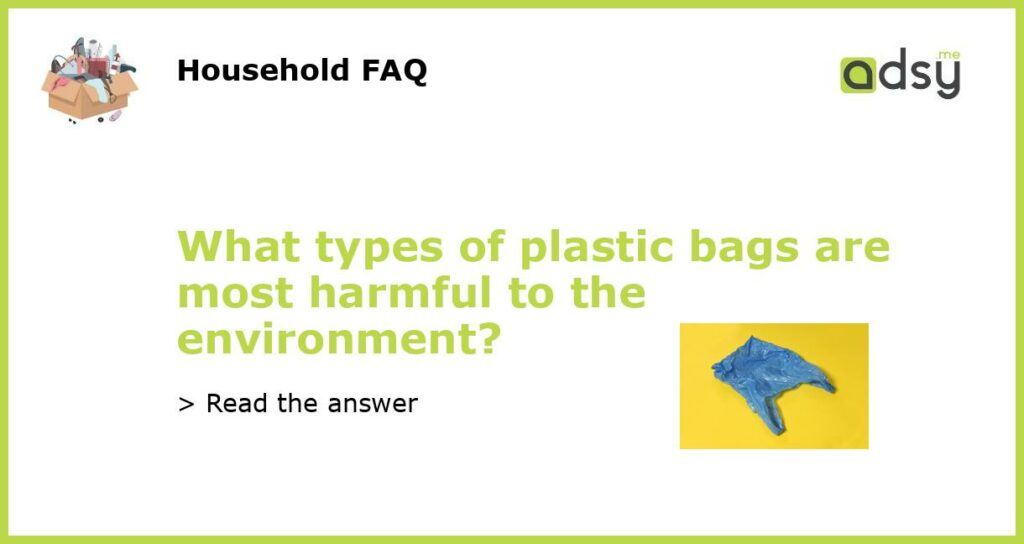Plastic bags have become a ubiquitous part of our daily lives, but their impact on the environment cannot be ignored. Not all plastic bags are created equal when it comes to their harmful impact on the environment. Some types of plastic bags are more damaging than others, contributing to pollution and harming wildlife. In this article, we will explore the types of plastic bags that are most harmful to the environment.
Single-use plastic bags
Single-use plastic bags are the most common type of plastic bags and the most harmful to the environment. These bags are typically made from low-density polyethylene (LDPE), a type of plastic derived from fossil fuels. Single-use plastic bags have a short lifespan and are designed to be used once before being thrown away. They are lightweight and easily carried by the wind, leading to litter and pollution in our oceans and landscapes.
Plastic bags without recycling symbols
Plastic bags without recycling symbols are also harmful to the environment. These bags are typically made from various types of plastic, including LDPE, high-density polyethylene (HDPE), or polypropylene (PP). Without a recycling symbol on the bag, it is difficult to determine the type of plastic used, making it harder to recycle. These bags often end up in landfills where they take hundreds of years to decompose. The manufacturing process for these bags also contributes to greenhouse gas emissions and pollution.
Thick plastic bags
Thick plastic bags, also known as reusable bags, are often perceived as a more sustainable alternative to single-use plastic bags. However, these bags can be harmful to the environment if they are not used and disposed of properly. Thick plastic bags are typically made from HDPE or LDPE, which take a long time to decompose. If these bags are not reused multiple times, their impact on the environment can be worse than single-use plastic bags.
Biodegradable plastic bags
Biodegradable plastic bags are marketed as a eco-friendly alternative to regular plastic bags. These bags are usually made from a type of plastic called oxo-biodegradable plastic, which breaks down into smaller pieces when exposed to sunlight and oxygen. However, there is debate among experts about the true environmental impact of biodegradable plastic bags. Some argue that the breakdown process releases harmful chemicals into the environment, while others believe that these bags still take a long time to decompose and can cause harm to wildlife.
Compostable plastic bags
Compostable plastic bags are designed to break down into organic matter when exposed to specific conditions in industrial composting facilities. These bags are typically made from biopolymers derived from plant sources such as cornstarch or sugarcane. While compostable plastic bags have the potential to be a more eco-friendly option, they require specific conditions to break down properly. If these bags end up in landfills or recycling facilities, they may not decompose as intended.
In conclusion, single-use plastic bags, plastic bags without recycling symbols, thick plastic bags, biodegradable plastic bags, and compostable plastic bags are the types of plastic bags that are most harmful to the environment. It is important to reduce our reliance on plastic bags and instead opt for reusable alternatives such as cloth bags or paper bags. By making conscious choices and embracing sustainable practices, we can minimize the negative impact of plastic bags on our planet.






